The National Gallery in London: Where to Start?
Having lived in London for the past three years as an art lover, I have had more than my fair share of questions about where to “start” at the...
Sophie Pell 3 February 2025
19 October 2020 min Read
Two men, police uniforms and some duct tape; this is how Rick Abath and Randy Hestand, security men at the Isabella Stewart Gardner Museum in Boston, found themselves tied up after midnight in the basement of the museum until the authorities released them six hours later on the morning after St. Patrick’s Day. What the police didn’t find were the 13 pieces missing from Isabella’s art collection. And so the chase began. After 30 years from the biggest art theft in history, we still don’t know where the $500 million artworks are hidden.
The stakes are too high now; no doubt the museum is offering a $10 million reward to anyone who knows their location. So, are you ready to solve the mystery of the missing artworks and bring them home?
Isabella Stewart Gardner was an American philanthropist and art collector who lived between 1840 and 1925. Coming from a wealthy family, Isabella left New York to finish her studies in France. With the support of Charles Eliot Norton, the first art history professor at Harvard University, Isabella gained an interest in collecting early editions of Dante’s works, along with other rare manuscripts and books.
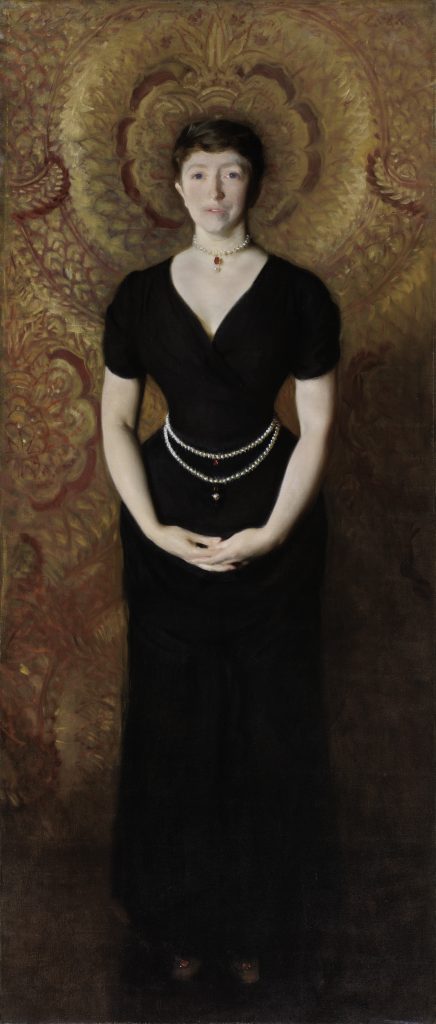
This was only the beginning because Isabella had a contagious ambition which fueled her vision for the future of art collectors in Boston. After her husband’s death in 1898, she stuck to her plans even more tightly than before. With the help of local architect Willard T. Sears, Isabella designed her yet to be Venetian palazzo fitted for a dedicated patron of arts. From
paintings and sculptures to furniture and tapestries, the freshly built museum had it all and it was ready to open its doors for the elite of Boston’s society on January 1st of 1903. As time passed, the palazzo acquired more and more artworks and hosted several concerts, lectures, and exhibitions – all in the name of culture and encouraging artists to promote their work. For example, John Singer Sargent used to paint in the Gothic Room.
Now, the imposing The Rape of Europe by Titian, the most important example of Renaissance art, and the famous El Jaleo by John Singer Sargent hang silently on the walls of the palazzo.
However, maybe what isn’t there draws even more attention to the museum and Isabella’s story, like the empty frames left behind after a heist. To be more exact, the biggest art heist in history.
Imagine this: St. Patrick’s Night, March 18th, 1990. A young Rick Abath, “a hippie guy who wasn’t hurting anything” as he put it, spends another shift in the empty museum with his fellow watchman, Randy Hestand. All of a sudden two men dressed as police officers show up at the employees’ entrance at 1:24 a.m. because of some “disturbance complaints”. Concerned, Mr. Abath calls for Mr. Hestand, falling directly in the thieves’ net.
Shortly thereafter the police officers asked Abath to step out from behind his desk because “didn’t they have a warrant out for his arrest?” according to Stephen Kurkjian, a reporter at the Boston Globe who investigated the case for decades. Violating the museum’s security protocol, Abath does exactly what he is asked to. Immediately, the two young security guards are immobilized, the thieves covering their eyes and mouths with duct tape and leaving them in the museum’s basement, handcuffed to pipes until the authorities arrive at 8:15 a.m.
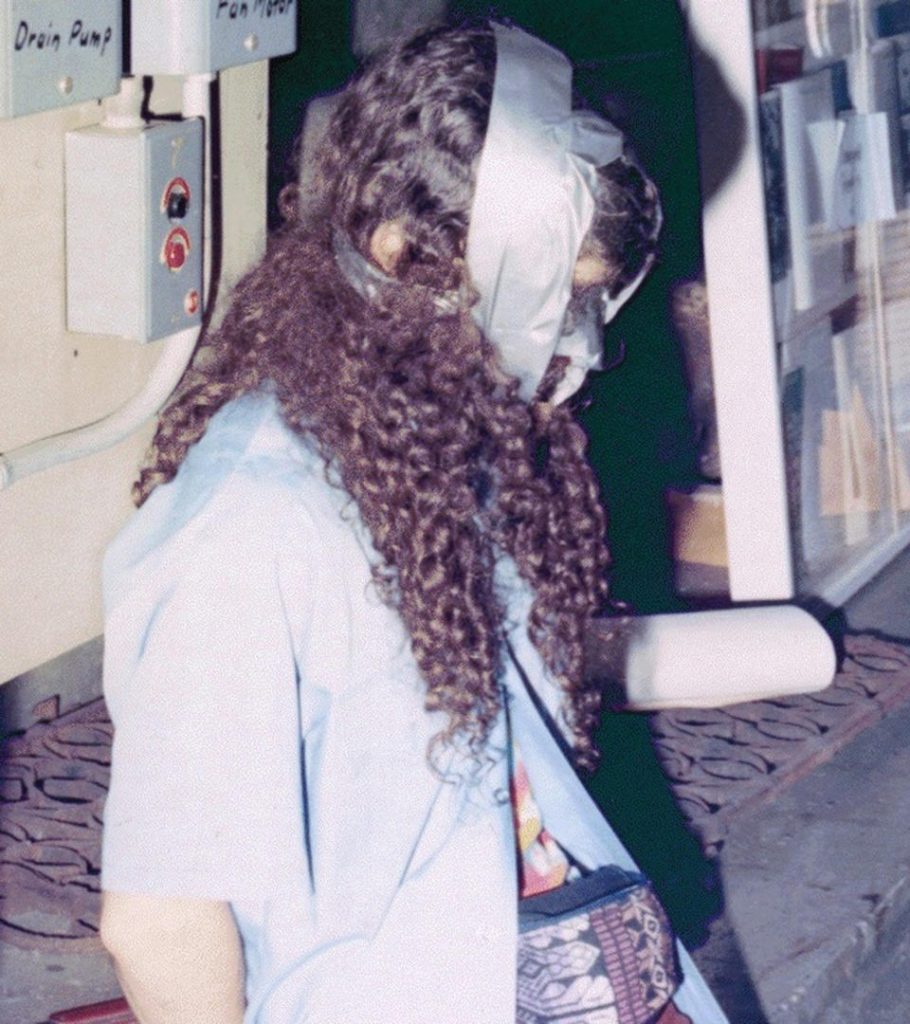
The galleries weren’t equipped with security cameras. They did have motion detectors however, which indicated the first gallery the intruders visited was The Dutch Room on the second floor. From here it gets very messy. Without a second thought, the thieves smashed and then sliced the paintings from their frames, as a furious hurricane, leaving behind a horrific crime scene for the investigators.
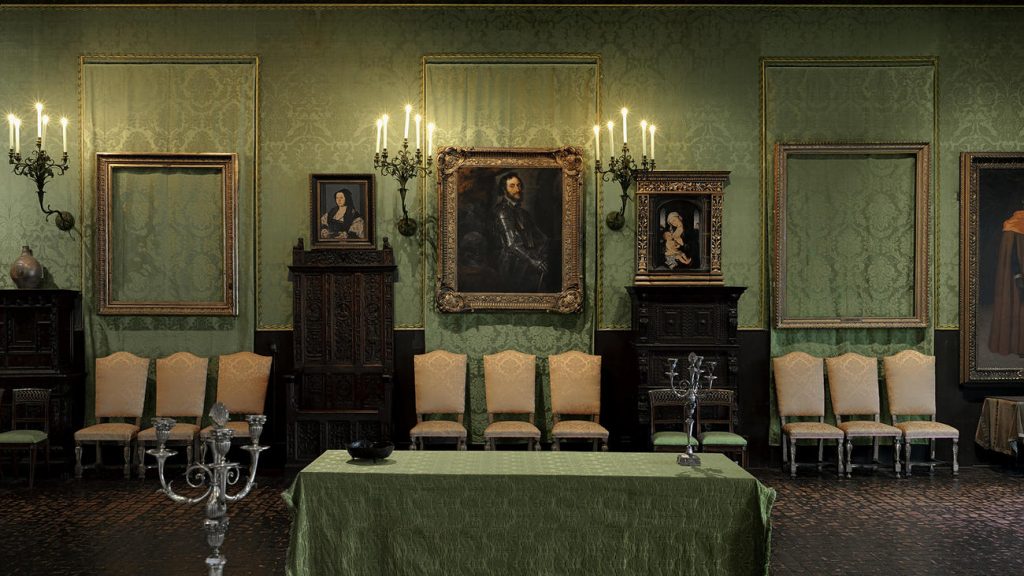
First, they went for Rembrandt’s Christ in the Storm on the Sea of Galilee – curiously enough, the only seascape the artist ever painted. Rembrandt van Rijn was a Dutch Baroque painter who lived from 1606 to 1669. The biblical scene holds great intensity with vibrant, bright color choices and detailed work characteristic to Rembrandt’s early style, rather than the less descriptive approach that we are used to seeing in his later paintings. This puts an emphasis on the whirling sea and the infuriated sky, letting the classical contrasting game between darkness and light roll in front of the viewer. One of the figures in blue invites the viewer with a simple glance into the tempestuous scenery – it’s Rembrandt himself staring directly at the viewer, a self-portrait of him holding a rope and his cap.
Anthony Amore, the museum’s chief of security, believes that the thieves were after Rembrandts all along since all museums in Massachusetts with Rembrandts were robbed before this heist.
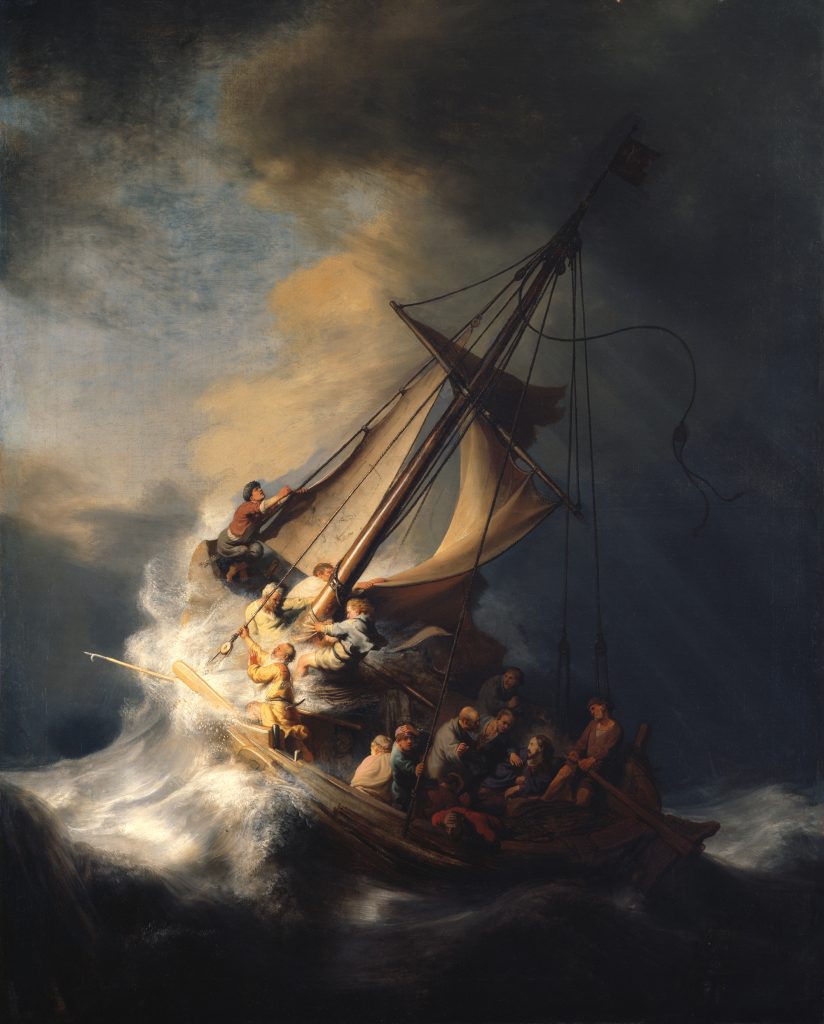
Moving on, the next masterpiece the clumsy intruders took was The Concert by Vermeer. Johannes Vermeer was a painter who was born in the Netherlands and lived during the 17th century. Today, only 36 artworks painted by him have survived the test of time. They include Girl with
a Pearl Earring (c. 1665) and The Milkmaid (c. 1660). A sterling example of Dutch workmanship, The Concert depicts two women and a man placed in a domestic parlor engaged in musical activities. With fine brush strokes, Vermeer succeeded in encapsulating the enigmatic atmosphere filled with heavy concentration radiating from the delicately crafted figures. The pearls, the complicated dresses, the beautifully decorated intricate chair all participate in the mural of open interpretations. An unbreakable spell of silence, although seductively tempting too, makes it increasingly hard to interrupt such a flamboyantly preoccupied moment.
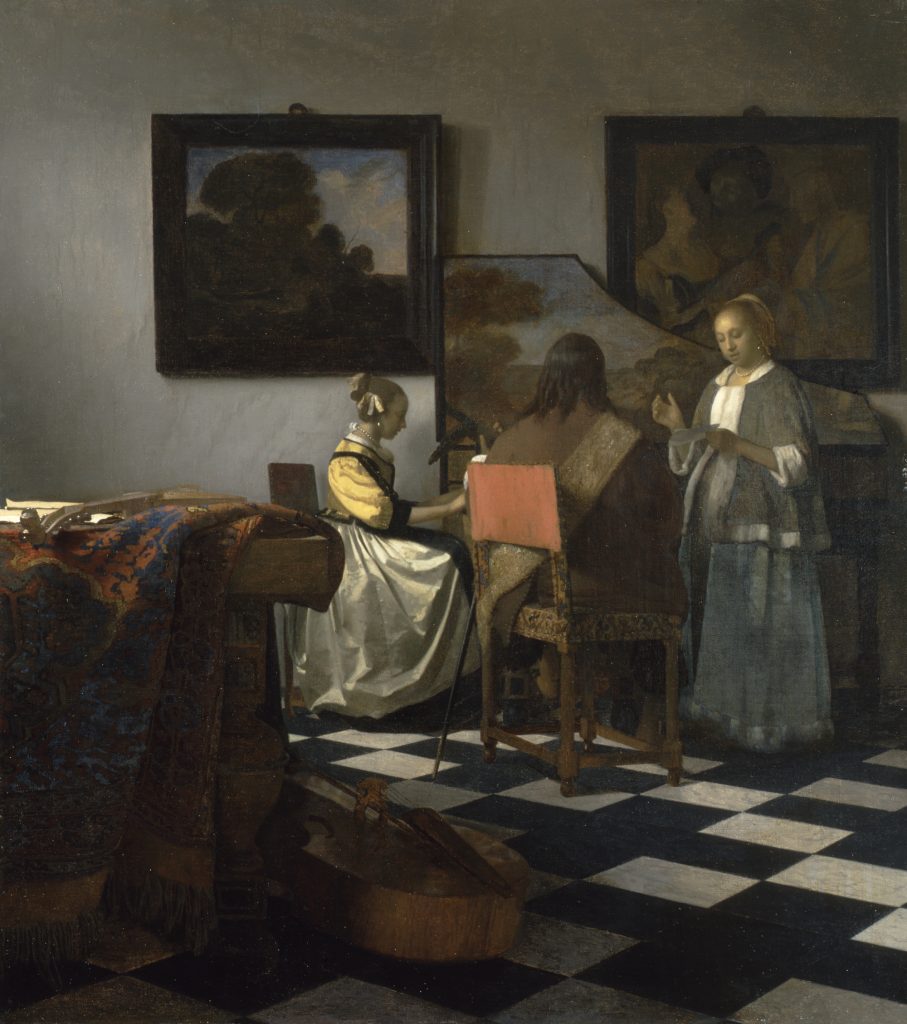
The thieves set forth onto their final and last gallery of the night: The Blue Room, on the palace’s first floor. A funny-looking man with a hat and a mustache enjoying his drink in a renowned french cafe is overshadowed by an older woman gravely dressed in black. Two portraits by Manet; one smaller and one ungraciously larger. They stole the first painting, Chez Tortoni, and left the empty frame at the security desk. None of the motion sensors, which were confirmed to work perfectly at the time of the heist, go off in this room as they did in the other galleries. Remember this painting because it’s going to get even more interesting from now on. Edouard Manet was a French painter born in Paris who lived between 1832–1883 and painted Olympia (1863) which caused controversy at the Salon in 1865.
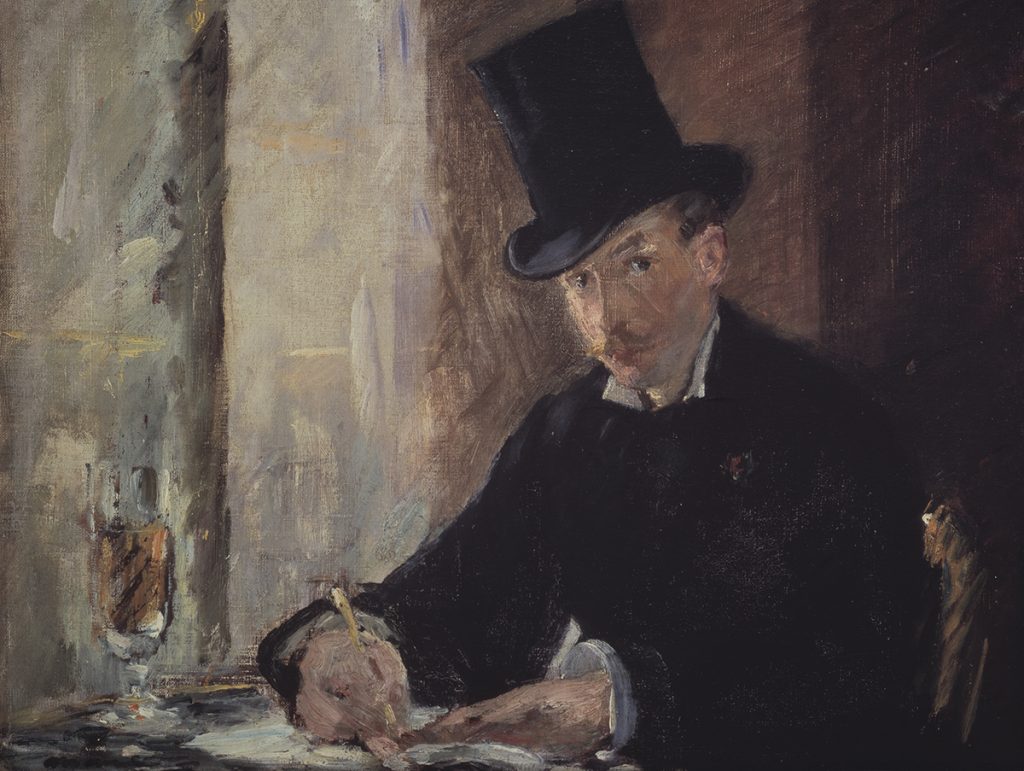
The thieves weren’t at all concerned with the arrival of the police, there was plenty of time. They took the videotape from the museum’s security cameras and left at 2:45 a.m. after executing one of the biggest and longest art thefts in history, 81 minutes in total from their arrival at 1:24 a.m. By comparison, the typical art heist takes between five and ten minutes, but of course, this was no ordinary heist. Along with the Rembrandts, a Manet, and a Vermeer, they took five watercolors by Degas (French Impressionist painter, 1834–1917) and some sketches, an ancient Chinese vase from 1200–1100 BCE, a Napoleonic eagle finial, and Landscape with Obelisk by Flinck. The thieves confused the Flinck for one of Rembrandt’s paintings, since Flinck was his student. All together this accounts to a total of 13 missing artworks, estimated at $500 million. At 8:15 a.m. the investigators arrived. The dreadful mess left behind in the galleries was truly gruesome. Mr. Abath and Hestand were released and the chase began, still continuing after 30 years of numerous false leads and dead suspects.
Anthony Amore, the museum’s chief of security, F.B.I. agent Geoff Kelly, and Charley Hill, ex-Scotland Yard investigator, are at an impasse. It has been 30 years since the heist and the artworks are still nowhere to be found. At least a few theories were generated, giving the investigators and art enthusiasts all over the world a bit of hope that maybe someday Isabella’s collection will be complete again.
Myles J. Connor Jr., a notorious Boston thief, claimed he organized the heist with one of his associates. With the help of an associate and a complicated scheme he devised 10 years earlier, he was theoretically able to be implicated in the theft while he was in prison. Yes, on the night of the crime, Mr. Connor was in prison. He had played a part in several other art thefts in New England and previous to the Isabella Stewart Gardner Museum case, he had stolen a Rembrandt from Massachusetts which he used later to get out of jail. Mr. Connor and his accomplice became uninteresting to the F.B.I. when they weren’t successful in bringing the paintings home. Mr. Amore is deeply concerned about this because the paintings are truly priceless:
“The pieces that were stolen from the Gardner really are the true definition of pricelessness, because they can never be sold, they can never be replaced. So when you lose a piece from this particular
collection the museum can’t just go out and acquire another
masterpiece to put in its place.”Anthony Amore, in Gardner Museum in Boston Offering $5 Million Reward for Stolen Art, FBI.gov.
The strongest theory they reached suggests that the heist was organized and carried out by Boston’s mob at that time. Mobster Carmello Merlino was overheard by the F.B.I. that he knew the location of the missing artworks. When convicted to 47 years in prison for attempted robbery, the authorities offered him the chance for a shorter sentence in exchange for the location of the thirteen missing works but he couldn’t give them anything valuable. Mr. Merlino died in prison in 2005.
George A. Reissfelder and Leonard V. DiMuzio were two lower-associates of Mr. Merlino’s. Despite their tragic deaths within two years following the heist, they still caught the investigator’s attention. They were spotted by witnesses dressed as Boston police officers driving around in a red automobile owned by Reissfelder, the same one seen near the museum on the night of the theft. Moreover, according to a couple of Mr. Reissfelder’s family members, Chez Tortoni, the stolen Manet from the Blue Room, was hanging on a wall in his apartment. In 2013, the F.B.I. didn’t announce publicly that these were the identities of the thieves responsible for the heist. However they acknowledged that their main two suspects were dead.

But why would you steal such valuable masterpieces if you cannot sell them, or do anything with them, really? Stephen Kurkjian believes that an associate of Boston’s most notorious mobster executed the crime. He supposedly wanted to give the paintings to the authorities in exchange
for his boss’s release from prison.
In 2002, an informant with connections to the Maine mob told the F.B.I. that Robert V. Gentile took possession of the stolen works in a parking lot in Portland, Me. Mr. Gentile, also known as The Cook by his fellow gangsters for whom he served meals at his Italian restaurant, may be one of the few persons alive who knows where the missing pieces lay. After digging under his property, investigators found a price list with each of the missing pieces. A federal US prosecutor said that Mr. Gentile was caught on a recording device, now in the possession of the authorities, discussing the sale of a Rembrandt and other artworks, for over $500,000. Nine years later, Mr. Gentile was arrested for selling hundreds of narcotic painkillers. Still, he didn’t give away any information about the location of the stolen items.
An associate of Carmello Merlino was arrested at the same time for attempted robbery. According to Mr. Gentile’s lawyer, in 2010, the associate contacted his client asking for help in recovering the missing items. Finally, six years later, his sentence was reduced by seven years but it’s not clear why. There still exist speculations that he told the investigators something about the pieces. The F.B.I. still believes the paintings are somewhere in New England, USA.
On the other hand, Charley Hill has another opinion. He is certain the artworks are in Ireland. According to him, the Irish Republican Army got its hands and the stolen pieces. In the past, he believed Whitey Bulger, Boston’s most famous mobster, was implicated in the theft by giving the paintings to the IRA. Mr. Hill knows he doesn’t have any hard evidence but he places his faith into an informant, Martin Foley, or The Viper, who presumably knows where the paintings are hidden. He has been in contact with The Viper for more than a year and together they were designing a plan for Foley to return the paintings without being prosecuted. Unfortunately, Mr.Foley disappeared in February. The Viper, a name given to him by the media, is known for his business in debt collection and surviving five attempted assassinations.
It doesn’t really make sense that the IRA would trouble with a trip to the USA to steal a Rembrandt or Vermeer when museums in Europe had exemplars as well. Nevertheless, Mr. Hill has a splendid experience in dealing with such unique cases of art theft: he retrieved Edvard Munch‘s (Norwegian painter, 1863–1944) The Scream (1883), Vermeer’s Lady Writing a Letter With Her Maid (c. 1670), and many more masterpieces while he worked as an art and antiquities investigator for Scotland Yard.
When he was still working for the Boston Herald in the summer of 1997, a reporter was inspecting the mysterious art theft himself. In his article “We’ve Seen It!” he explains how an antiquities dealer watched by the F.B.I. showed him into a sketchy storage locker containing the thirteen missing pieces from Isabella’s art collection. He claims that the guide pointed out to him with a flashlight Rembrandt’s signature on one of the paintings. There were negations for the return of the artworks but in the end the results were negative. Investigators are still skeptical of his story. In the same year the reporter received paint chips that initially the authorities dismissed their authenticity concerning Christ in the Storm on the Sea of Galilee. After further examination, a Vermeer expert discovered in 2003 that the chips had a close crackling pattern to other Vermeer masterworks and a perfect match to a pigment used by the artist in his paintings called “red lake”.
Crime and art lovers all over the world are left with a bunch of unsatisfactory theories, dead possible suspects, and unsuccessful leads. From a notorious art thief to the IRA to Boston mobsters, the Isabella Stewart Gardner Museum art heist is still a fuzzy mystery to everyone,
including the F.B.I. Two possibly dead suspects broke into the museum on the night of March 18th dressed as police officers and immobilized the two security men on duty. They left a messy crime scene behind and with thirteen stolen works from the galleries’ collection. In her will, Isabella Stewart Gardner stipulated that no paintings in the museum should be moved or any new items acquired, or otherwise everything, including the house and the land, would be going into Harvard’s possession. The empty frames wait patiently for their rightful halves to safely return home and complete the work of a lifetime of one dedicated art collector.
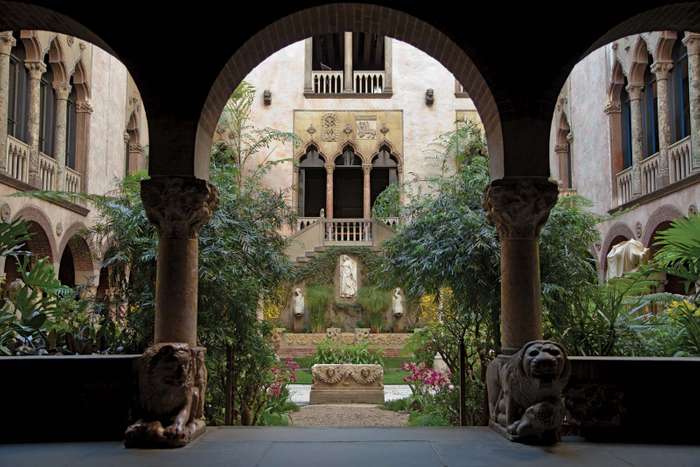
The incident at Isabella’s Stewart Gardner Museum in Boston has a bitter-sweetness to it giving us, mere critics, with an unsatisfied appetite for answers and excitement, a rush of adrenaline for a succulent puzzle. It is intriguing, yet infuriating that the hunt after clues and new possible locations of the missing items continues. Somehow this conundrum, as though the half-billion-dollar missing pieces becomes more alluring with each year since their disappearance, creates a sense of magic which will last for a bit longer. Long enough for the simple spectators to bathe in the mystery perfume of the greatest art heist in history.
You can learn more about the theft and investigation in Master Thieves: The Boston Gangsters Who Pulled Off the World’s Greatest Art Heist by Stephen Kurkjian, who worked on the case for decades as a reporter.
DailyArt Magazine needs your support. Every contribution, however big or small, is very valuable for our future. Thanks to it, we will be able to sustain and grow the Magazine. Thank you for your help!